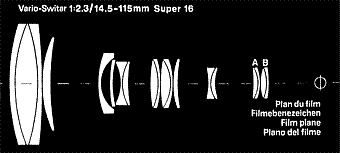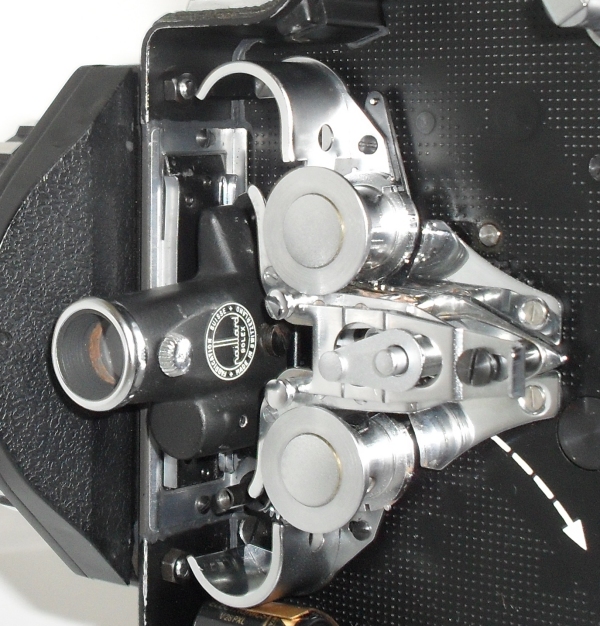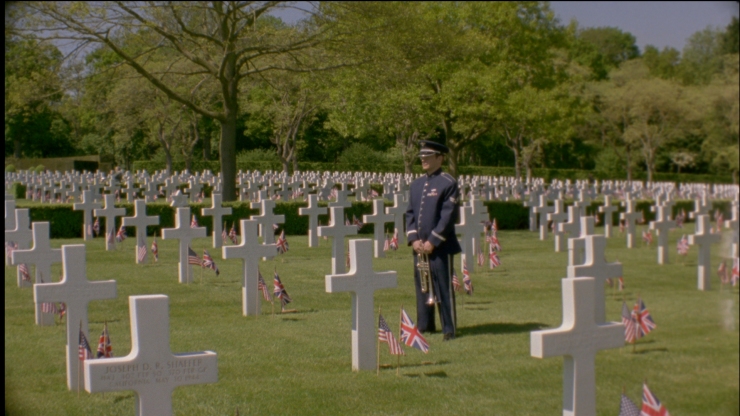Bolex H16 User
For Practical Bolex H16 Filming
Super 16mm Lens Advice
So you have a Super 16mm Bolex camera and want to get the most out of it by using it with some lenses that truly cover the format. The only problem is again there is a lot of conjecture and discussion of what lenses do cover the format, what do with certain limitations that can be worked around and what don’t come anywhere close.
This discussion assumes the following:-
That you obviously have a Super 16mm Bolex H16 camera which hasn't had a new heavy duty lens mount installed to fit lenses meant originally for 35mm cameras whose lenses clearly will without question cover the smaller Super 16mm format. This is obviously one way to go although the cameras look a little butchered I think when retrofitted with a bigger lens mount on them and I wouldn’t advise it as there are lots of lenses that do cover super 16mm in “C” mount that can be used on the traditional “C” or “Bolex Bayonet” mount cameras using the “C” mount adapter.
However I'm going to have to limit my discussion here to the Bolex Kern Lenses originally designed for and supplied with the H16 camera that would be preferable to be used if they can work with the format. If you are going to move away from Bolex Kern lenses and go to other brands a good source of affordable super 16mm lenses you could do no better as a source is calkovsky.com and find something that fits in with your requirements. I'm going to limit my discussion to the Bolex Kern Lenses originally designed for and supplied with the H16 camera which would be preferable to use if they can cover the Super 16mm frame and flag the ones that don’t.
What needs to be bared in mind is even though technically the format was invented in the early 70’s for a variety of reasons discussed in the Super 16mm camera conversion section the format didn’t catch on until the late 80’s and only made a head of steam into the early 90’s onwards. By this point all the Kern Bolex lenses had already had their designs locked in years or decades before so it’s just pot luck if there lenses covers the format or not. Yes there are 3 lenses available new from Bolex today but there designs are old the latest being the PTL Zoom introduced in 1981 well before Super 16mm became a ‘thing’.
The list complied below lists all the lenses I have actually owned and shot film with using a Bolex factory converted Super 16mm camera and looked at the results. Some you see though the viewfinder straight away that there's problems others are more subtle and its only before you get your film back or a scan back before you see anything wrong. The main problem is vignetting which looks like one of those scenes in movies where a character is looking through a telescope or through a keyhole but another problem that may be more subjective for some is focus drift in the Super 16mm frame area.
Anyway i can successfully state for the record based on my own observations the following lenses can and cannot be used on Super 16mm.
Successfully Covers the Format:-
Switar f=10mm 1:1.6(*)
Switar f=10mm 1:1.6 + Century Wide Angle
Switar f= 25mm 1:1.4
Switar & Macro Switar f=26mm 1:1.1
Switar f=50mm 1:1.4
Switar & Macro Switar f=75mm 1:1.9
(*) Andrew Alden in his Bolex Bible book states that the 10mm Switar does not cover the format. It does for me!
Fails to Cover the Format:-
f=10mm 1:1.6 Switar + Aspheron 5.5 “Major Vignetting / Keyhole effect using Aspheron looks like your shooting through an old telescope 100% NOT usable for Super 16mm this combination”
Vario-Switar POE 1:1.9 f=16-100 “There is a slight vignette visible when the lens is fully zoomed out with focus set to infinity and the lens fully open which gets even more pronounced if its stopped down. If you avoid being fully zoomed out and stopped down, throughout the rest of the range of lens combinations no vignette happens at all so most people usually class this lens as covering Super 16mm. I used to use this lens for a long time shooting reversal stocks and projecting and saw no issues either but when switching to negative stocks and getting proper scans to hard drive it’s hard to ignore the focus drift into the Super 16mm picture area on the right side of the frame. This may be a controversial point for some especially sellers who list this lens as being Super 16mm but to illustrate my point here’s a scan of a frame of film I shot with the POE no doubt set at infinity with the lens fully zoomed out I probably used an ND filter so i could have the lens fully open to produce the shallowest vignette and and as you can see scanning the film at 2K you can barely see a vignette only clue is the black spot top right of frame. Everything looks nicely in focus going from the left side of frame going right until you hit the 4th tree from the right in the far background where there is a noticeable drift in focus going right on the clouds and gravestones."
If If you try and fit a POE Zoom on a Super 16mm converted camera and the conversion has done the proper step of recentering the center of the frame to the new Super 16mm frame size you will find that its very difficult to attach the lens on the camera. The reason for this is the Lens has a sheild which is deisgned to fit around the front camera release. With some force you can get the lens to fit and lock but it really isnt nice. To get this to fit you need to get a machinist to cut off some of this shroud and then you can attach the lens without problems.
Vario Switar 100 MC & PTL 1:2 f=12.5-100 “These lenses do not cover Super 16mm with the aspheron at all and the zoom lens only from 25mm upwards and vignettes pretty bad up to this point. Even though these lenses arrived later than the POE they are worse for Super 16mm. Bolex did offer a conversion service for this lens (see below) which when I last enquired had been discontinued and I have yet to see this lens come up for sale in its Super 16mm version which should be labelled as Vario Switar 115 MC & PTL 1:2.3 f=14.5-115. Nobody uses this for Super 16mm and its classed as NOT being a Super 16mm zoom by all sources i have come across which is really disappointing. I did own it once and was planning to get it converted which i never did looking at the image through the viewfinder the vignette was very bad."
Bolex Information on the Super 16mm Conversion of the Vario Switar 100 MC and PTL
 The current 12.5-100 PTL models show a "port-holing" effect with focal lengths below f=25mm.
The current 12.5-100 PTL models show a "port-holing" effect with focal lengths below f=25mm.
This has motivated us to undertake modification of the Vario Switar f=12.5-l00mm range, which enables us to offer a lens of good quality at an interesting price.
The transformation consists of replacing the basic lens, i.e. groups A and B in the attached diagram. The specifications of the modified lens are as follows:
| Vario Switar f=12.5-l00mm Modified Characteristics | |
| Focal length Range | Maximum aperture: 1:2.3. |
| Long focal length: | f=115mm instead of f=100mm. |
| Short focal length | f=14.5mm instead of f=12.5mm. |
| Horizontal shooting angle | |
| Long focal length: | f=115mm (lens focused to infinity) = ~7° |
| Short focal length: | f=14.5mm (lens focused to infinity)= ~53° |
Although the range of focal lengths is 4.5mm to 115mm instead of 12.5mm to 100mm.
It should be noted that the shooting angle is even wider than in the original version, on account of the width of the Super 16 image.
Aspheron
On both versions of the lens supplied with the "Aspheron" button, the aspheric optical complement can be used without restriction. The focal length becomes f=7.5mm (instead of f=6.5mm) thus resulting in an horizontal shooting angle of 75° practically without distortion or loss of quality. Filming with the close up lens also remains possible.
Vario Switar Compact 1:3.5 f=17-85 “I used to love this lens so small and light for a zoom and such a good range when I used to shoot just reversal stocks and project them but again switching to negative film and electronic scans I saw the problems a slight vignette when fully zoomed out and stopped down (very very slight) and I’d of still used it if that was all I saw but again bad focus drift into the Super 16mm picture area makes it a no no for me now. Again this decision may annoy some but here’s a frame grab so show why. Compare the two gravestones in the immediate foreground the one on the left is sharp and everything in frame is sharp until you hit the right foreground gravestone and then to the right of that everything drifts in focus there also appears light refracted through the sprockets holes some way and making a ghostly impression back onto the film on the far right side."
Vario Switar 86 Original 86, 86EE and 86OE 1:2.5 f=18-86 “According to Bolex's own literature on Super 16mm and i quote "the old f=18-86mm EE and OE lenses are unusable" so all 3 types of this lens do not cover the format so assume a bad vignette over the Super 16mm picture area although I have not personally owned this lens having read the above I never did so I cannot comment but assume the worst.”
If you know of a Bolex Kern Lens from the Switar, Pizar or Yvar range for Bolex cameras that I haven’t covered here that doesn’t cover the format or does let me know if you could provide scans of frames shot with film and digitally scanned not just stuff shot on a Black Magic Pocket camera that would be great.
 There is a slight crop in the image shown in the viewfinder as compared to what you will see from a full frame scan of a film if you want to see the whole image available from a lens you can use a device for reflex cameras called a critical gate focuser.
There is a slight crop in the image shown in the viewfinder as compared to what you will see from a full frame scan of a film if you want to see the whole image available from a lens you can use a device for reflex cameras called a critical gate focuser.
Remove the gate and drop in place. Then put the I T switch to T and push the single frame release and you’ll see the image formed without viewfinder cropping though it is upside down.
This device even though it was designed again prior to the introduction of Super 16mm does cover a Super 16mm converted cameras gate and allow you to see the full framing which is a little extra on top and bottom.

